My simple SEO strategy to reach the #1 position
I have a pretty stable SEO strategy for my HTML rendering API project, intending to reach the #1 position in Google rankings.
And I plan to automate it, but before I do it, I am curious to know your feedback on what I am doing wrong and what I can do better.
1. Discover keywords “on the go”
There are so many ways to discover keywords related to a niche. But my favorite one is the most proactive. I find them out “on the go”:
- I write a post related to my niche with all my passion and without researching any keywords. I am focused on delivering as much value as possible.
- I wait until Google starts indexing it
- And I started gathering related keywords to my niche.
Here is a quick example of how I did. I wrote a simple but quite long post about how to take screenshots with Puppeteer sharing all my experience and passion about the topic:
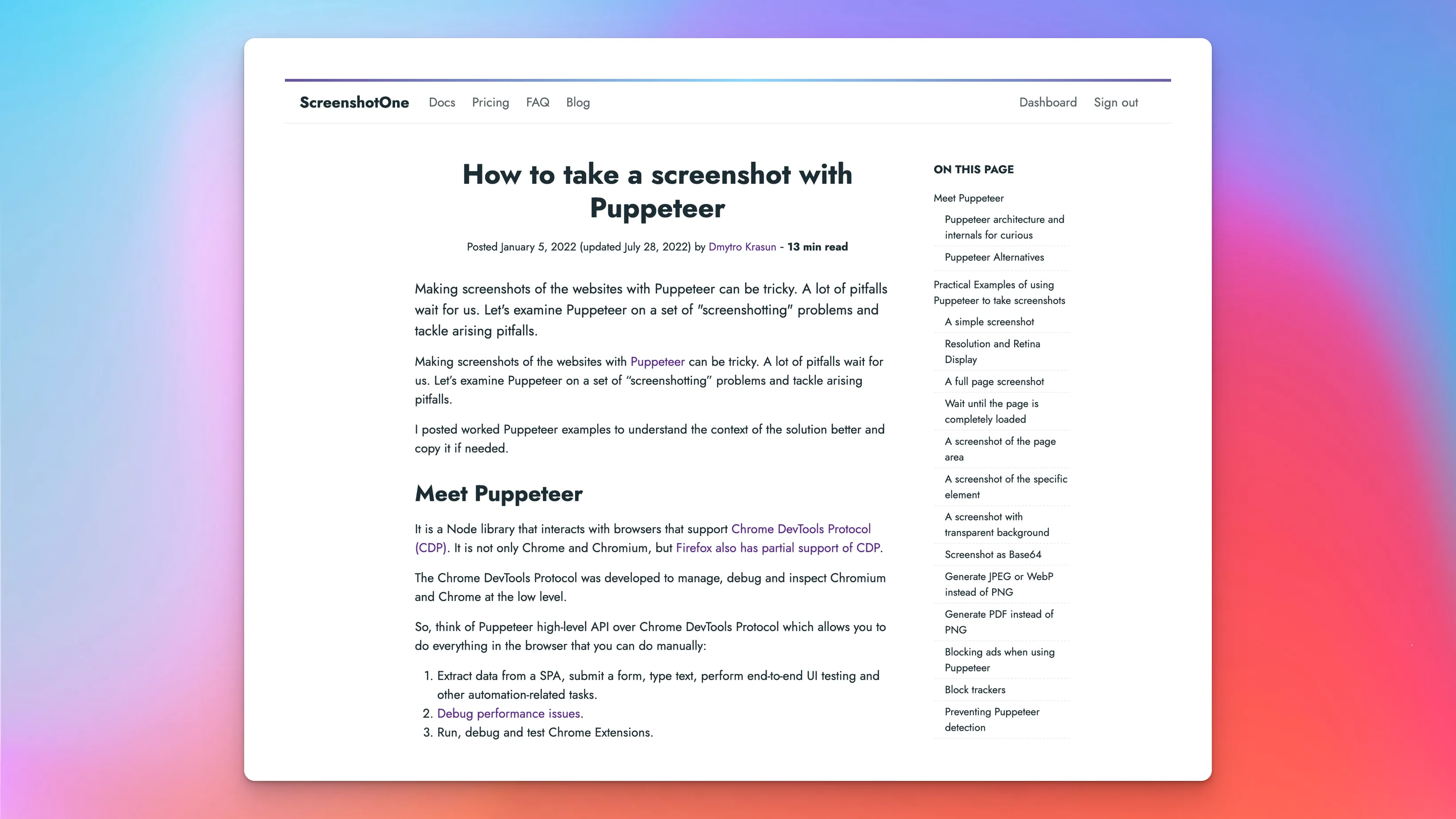
I waited for 3-4 weeks and started gathering keywords related to the page in Google Search Console:
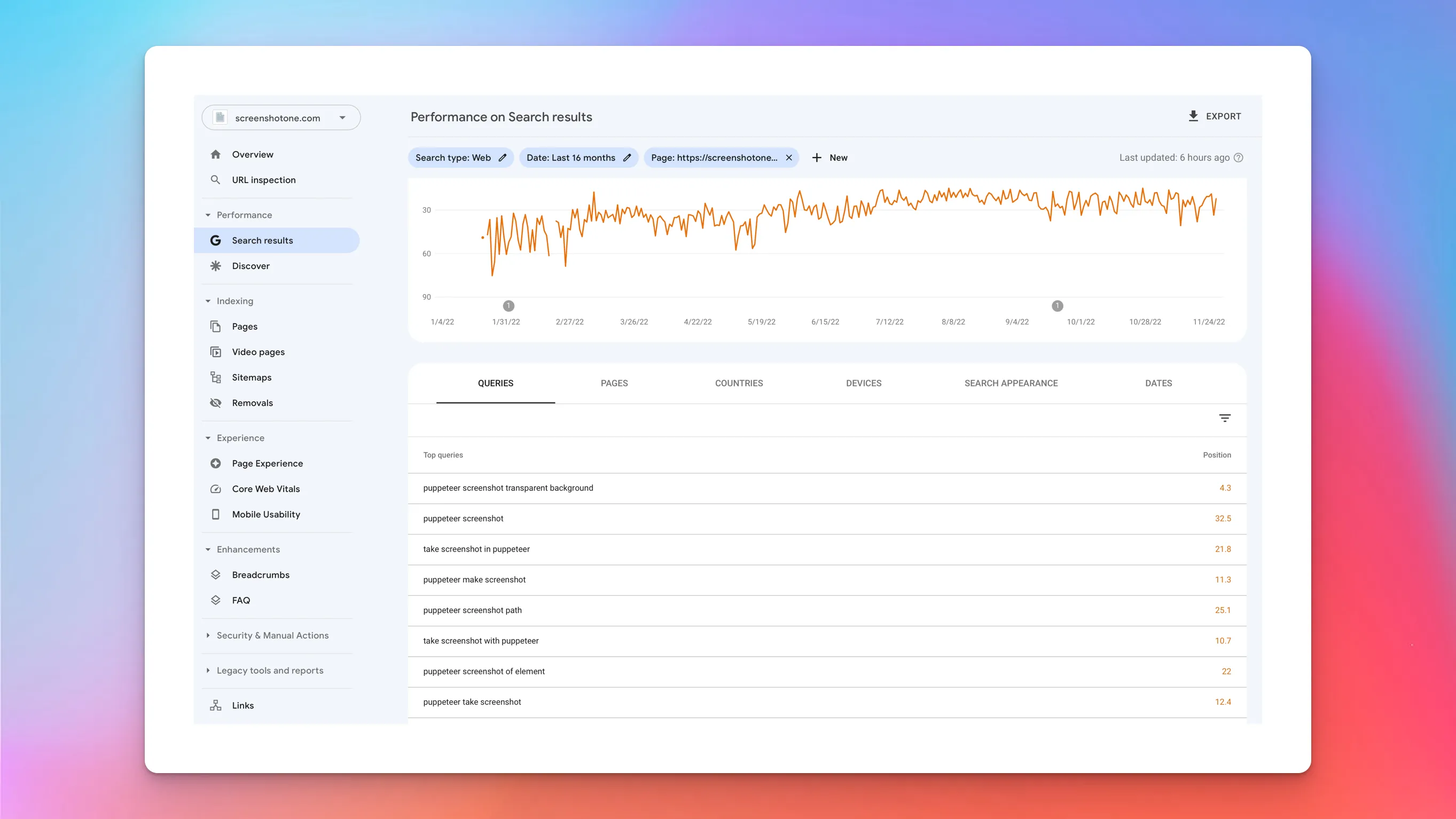
I filter by the page and open the “Queries” tab. Then I download a CSV file with all the keywords and their metrics.
That’s my simple keyword discovery method. Is it complex? No. Is it slow? Yes.
The main benefits I see:
- Once published, I already have ready content that I can improve later, and people start visiting my site without overthinking it.
- Once people visit my site, I can start optimizing it for conversions.
- Google Search Console shows all related keywords to my page that I can rewrite the post for and improve my rankings.
The main downside is that I might miss the keywords. Writing the best possible content as early as possible is generally better. And the page might be irrelevant to my niche at all.
2. Prioritizing
Once I have all the keywords people use to search for my niche, I can start meditating on what might be the lowest-hanging fruit to pick up.
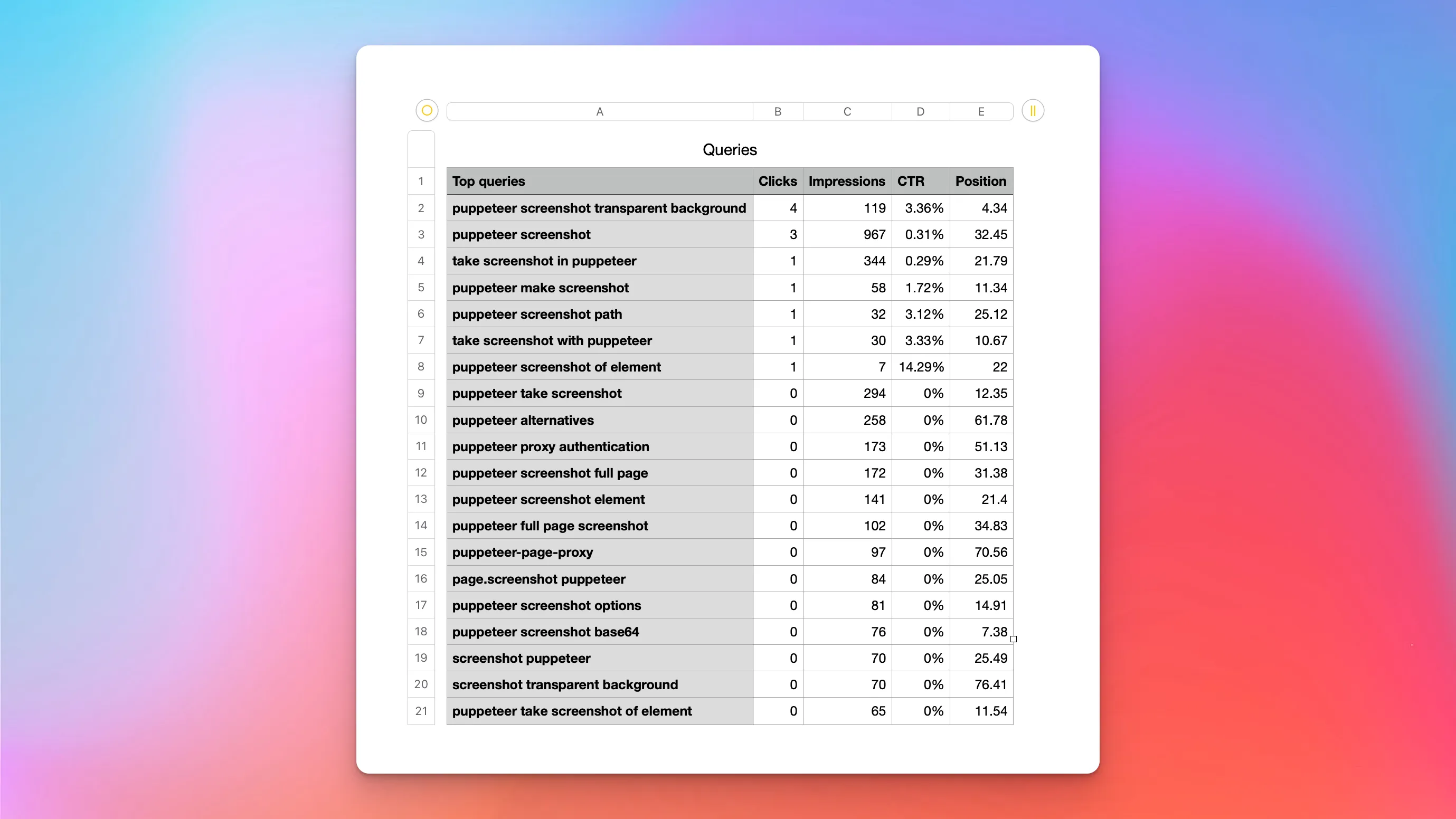
From the raw data perspective, it might seem the lowest-hanging fruit is the keywords with the most impressions but at relatively high positions and/or no clicks. But there is a ton of pitfalls in this reasoning and nuances.
You might have a low click-through rate (CTR) because of the search result Google shows. A user doesn’t believe that your page might satisfy their search intent and doesn’t click on the result item with your site. You need to improve your title and description of the content. And CTR must be considered within the position because it correlates.
So, for me, there is no single formula. My current approach is to use keywords that target the most painful problem, and I can provide a solution for it. In addition, I want to write for keywords with good volume but not competitive enough.
You will find your formula with time.
3. Publish and Continuously Improve
Publish and forget. No! That’s the most costly mistake you can make. Google constantly improves the search engine to detect whether your content is helpful. You might start losing traffic without updates.
How do I decide what to update, and how often do I do it? I apply the same process I do when publishing new content:
- Discover keywords.
- Prioritize.
CreateUpdate.
I go to my analytics and check which entry pages from Google drove the most traffic to my landing page first because I want to work first on the content that might potentially convert visitors to users.
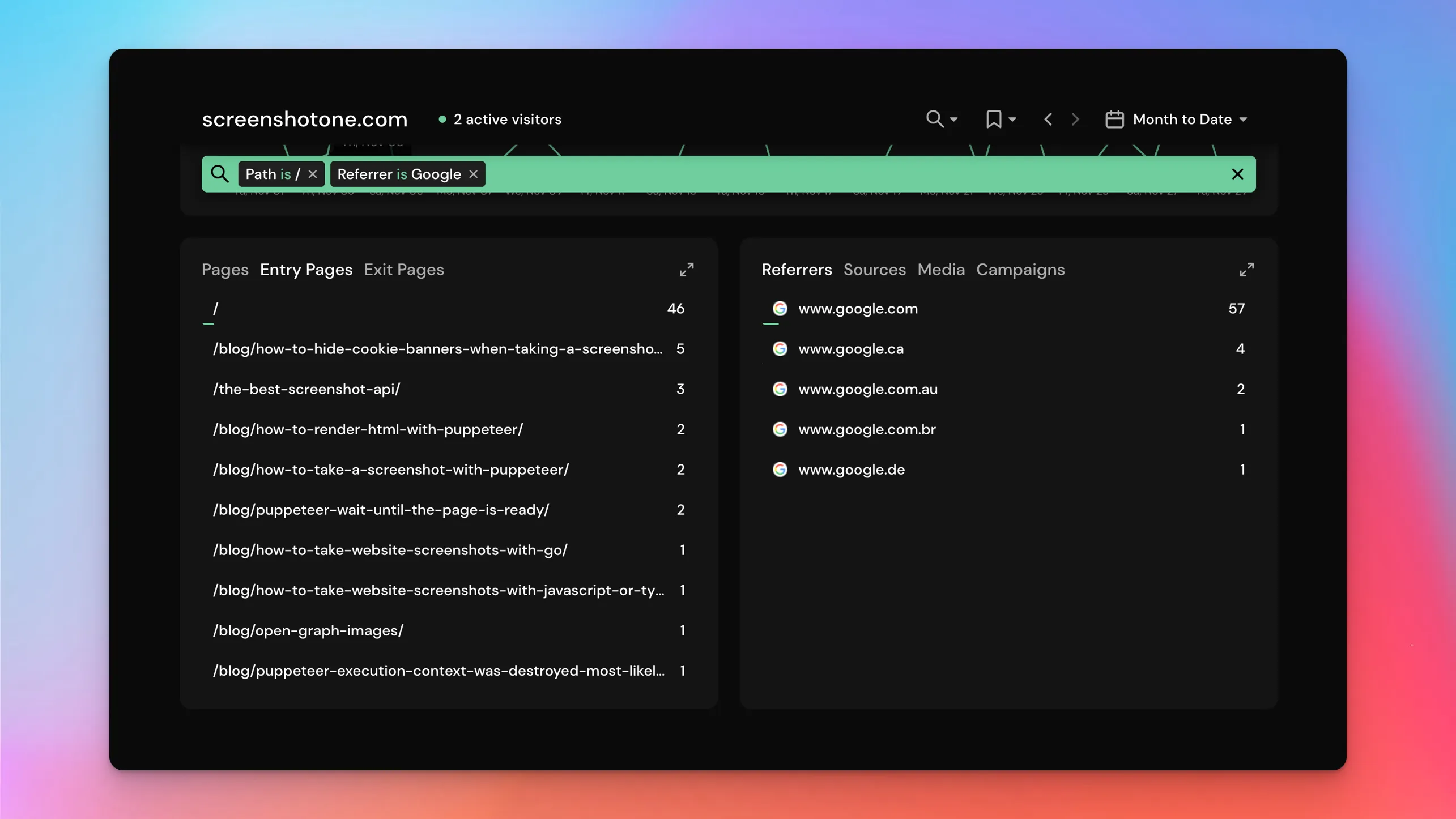
In this example, it was a post about how to hide cookie banners with Puppeteer, so my goal is to understand what keywords I can update for the most potentially “converting” page.
Then I go to Google Search Console, filter by page, and download keywords again.
I sort them by most impressions and see if I can mention them directly in the article or rewrite the post for them.
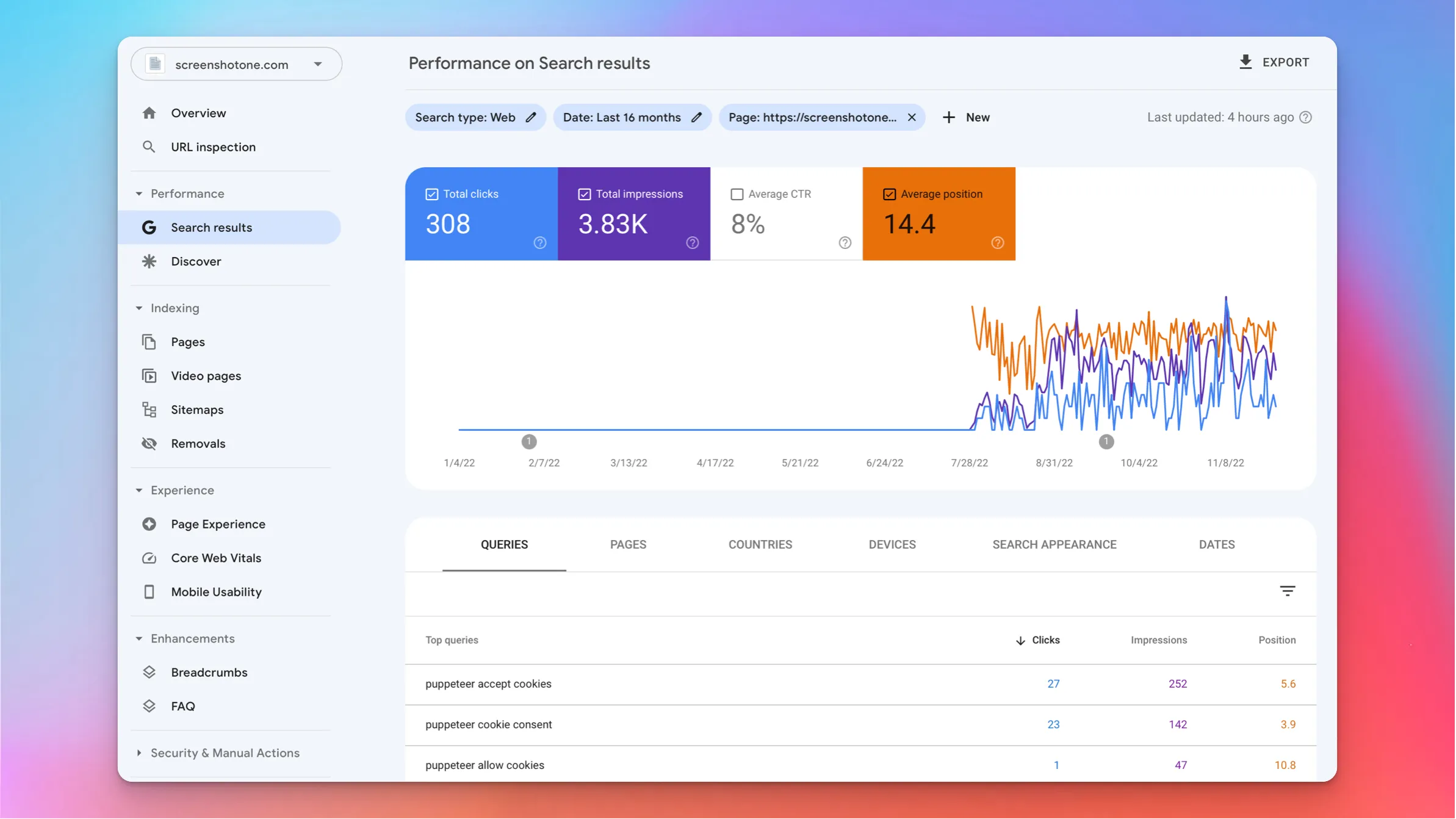
That’s it. This strategy helps me now to grow aggressively, and I hope it will get me to the first position at Google.
Thanks
I might be super wrong with what I am doing. Thanks for investing your time and reading. I am super curious to know what you think about my strategy. And do you know any tools that automate and can streamline the described flow?